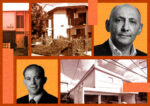Trending
Kimmelman in the dark about Central Park’s skyscraper problem: Architecture review

In a recent article, the architecture critic of the New York Times, Michael Kimmelman, questioned the wisdom of constructing all those super-tall buildings around the city, especially on the southern edge of Central Park.
His piece, which has set the city’s architectural and real estate communities talking, is measured to the point of being non-committal. It recognizes that a balance should be sought between the daring of developers and their architects on the one hand, and the interests of the city itself and its citizens on the other. The trick, which is almost impossible to legislate, is ideally to keep bad architecture from being built while fostering good architecture.
Kimmelman is also correct to worry that many of the purchasers of the units in these new buildings will not use them as primary residences, and so will escape paying property taxes. That issue, by contrast, should be relatively easy to legislate. Finally, Kimmelman is entirely correct in rebuking the ugliness of Christian de Portzamparc’s One57: “It’s anybody’s guess how the building got past the drawing board.”
Where I disagree with him is in his worrying, together with the Municipal Art Society in an upcoming report, that these tall buildings, achieved through the purchase of air rights from existing properties, will cast unwelcome shadows over Central Park. By the very nature of the purchase of air rights, these buildings cannot cluster together as the previous generations of skyscrapers have done on Central Park South, those of the 1930s and then of the 1970s. Most of the damage to sunlight in the southern end of Central Park was already perpetrated forty or so years ago: The new buildings are, and will remain, sufficiently isolated that they will block, if anything, only a few minutes of sunlight during the winter months.
Perhaps more pertinently, the emergence of the four or five super-tall buildings that are nearing completion or will soon begin to rise, represents the next phase in the development of skyscrapers in New York City.
Now, it is the paradox of skyscrapers that they function aesthetically only where they do not function urbanistically. Skyscrapers look best when the can rise in virtual isolation, without competition from other buildings. That is how they are conceived by their architects. But the circumstances in which that isolation is possible (small or scattered cities), generally make the construction of tall buildings unnecessary. You don’t need a massive skyscraper in Santa Fe, because there is quite enough space for the population to inhabit and work in.
In Manhattan, however, where every square foot is jealously counted and protected, skyscrapers make sense, but so — at least until recently — has the clustering of them into neighborhoods where their individuality is virtually invisible from the street.
This newest batch of skyscrapers, however, will be different. Because of landmarking and the purchase of air rights, that clustering of buildings will not be possible. Also, these are residential buildings rather than the offices buildings that, until recently, have been the main typology of skyscrapers. The clustering of tall buildings would ruin most views, which would inhibit their being clumped together in the first place, even if local laws allowed it. Instead, for the first time in generations, we will soon see along Central Park South, skyscrapers rising as they were originally conceived, in splendid isolation.




